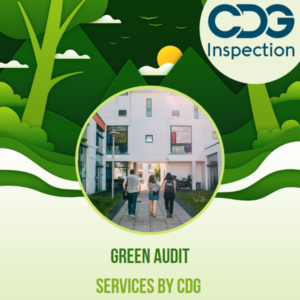Introduction:
As the world faces the pressing challenges of climate change and environmental degradation, it is crucial for institutions to take proactive measures towards sustainability. Colleges, as centers of knowledge and innovation, have a unique opportunity to lead the way in promoting eco-friendly practices. In this blog post, we explore the significance of green audit services in colleges and how they contribute to building sustainable campuses.
Section 1: Understanding Green Audit Services
Explaining the concept of green audits and their role in evaluating environmental performance.
Highlighting the benefits of conducting green audits in colleges, such as cost savings, resource efficiency, and enhanced reputation.
Introducing the various aspects covered by green audit services, including energy consumption, waste management, water conservation, and carbon footprint assessment.
Section 2: The Importance of Sustainable Campuses
Emphasizing the need for colleges to embrace sustainability as a core value.
Discussing the positive impact of sustainable campuses on students, faculty, staff, and the surrounding community.
Showcasing examples of colleges that have successfully implemented sustainable practices and their achievements.
Section 3: Conducting a Green Audit in Colleges
Outlining the step-by-step process of conducting a green audit in a college setting.
Collaborating with professional environmental auditors or engaging internal sustainability teams.
Collecting and analyzing data related to energy usage, waste generation, water consumption, transportation, and other relevant areas.
Identifying areas of improvement and developing an action plan for sustainability enhancements.
Section 4: Sustainable Practices in Colleges
Highlighting key areas where colleges can focus their sustainability efforts:
Energy Efficiency: Implementing energy-saving measures, adopting renewable energy sources, and optimizing building systems.
Waste Management: Promoting recycling, reducing waste generation, and adopting composting practices.
Water Conservation: Implementing water-efficient fixtures, promoting awareness campaigns, and optimizing irrigation systems.
Transportation: Encouraging sustainable commuting options, promoting cycling and walking, and implementing carpooling programs.
Green Spaces: Enhancing biodiversity, promoting native plant species, and creating sustainable landscaping.
Section 5: Benefits and Beyond
Discussing the wide-ranging benefits of implementing sustainable practices in colleges, including reduced operational costs, improved student engagement, and enhanced institutional reputation.
Exploring opportunities for collaboration and knowledge-sharing among colleges in sustainability initiatives.
Encouraging colleges to engage in ongoing monitoring, evaluation, and continuous improvement in their sustainability efforts.
Conclusion:
Green audit services provide colleges with a valuable tool to assess and improve their environmental performance. By embracing sustainable practices, colleges can create campuses that serve as models of environmental stewardship and inspire future generations. Through green audits and the implementation of sustainable initiatives, colleges can make a meaningful contribution towards a greener and more sustainable future. Let us embark on this journey together and foster sustainable campuses that positively impact both the present and the future.


